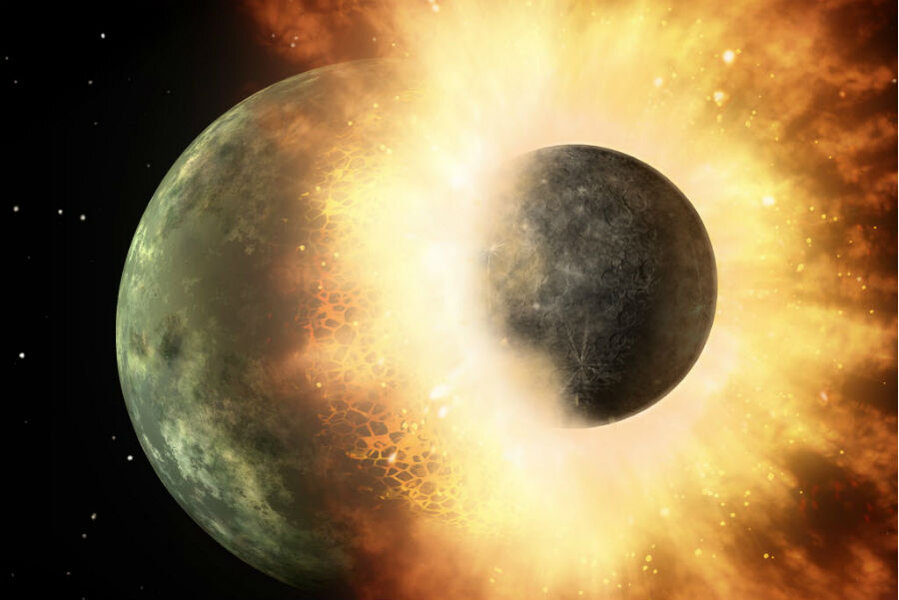Did a planetary smashup deliver the key ingredients for life?
Loading...
All life (as we know it) depends on carbon. But most models of Earth's formation can't explain how the crust has enough carbon to support life. So where did it all come from?
A colossal smashup with a Mercury-like protoplanet some 4.4 billion years ago, suggest researchers from Rice University and Woods Hole Oceanographic Institution in a new study published in the journal Nature Geoscience.
Most scientists agree that about 4.5 billion years ago, Earth was covered with hot magma, and as it cooled, most of the heavier metals near the surface sank deep into the planet. Iron alloys bonded with carbon and sulfur, pulling both into the Earth's core, and any remaining carbon would have vaporized into space from the extreme heat, argue the scientists. The only way to keep carbon and sulfur near the surface is to bring some from a planet that formed differently, they say.
"We suggest that the accretion of a Mercury-like (reduced) or a sulfur-rich (oxidized) differentiated body—in which carbon has been preferentially partitioned into the mantle – may explain the Earth’s carbon and sulfur budgets," says the study.
In other words, a smaller proto-planetary body with more carbon in its mantle could have seeded the Earth with carbon in the early stages of its development. A collision with such an object could have spread the carbon over the upper layers of infant Earth.
"One scenario that explains the carbon-to-sulfur ratio and carbon abundance is that an embryonic planet like Mercury, which had already formed a silicon-rich core, collided with and was absorbed by Earth," said Rajdeep Dasgupta, a study co-author, in a statement. "Because it's a massive body, the dynamics could work in a way that the core of that planet would go directly to the core of our planet, and the carbon-rich mantle would mix with Earth's mantle."
The new carbon introduced to the Earth's mantle would eventually float up to the surface and solidify in the crust. There, its atomic structure allowed it to bond with other elements to form complex organic compounds, the building blocks of life.
Though an event like this would be cataclysmic today, a planetary crash of this scale may not have been unprecedented in Earth's history. Large impacts of this kind were far more common in the early days of the solar system. At least one impact between a massive protoplanet and the Earth is thought to have formed the moon about 4.5 billion years ago. Frequent impacts from icy comets probably provided much of the water made up Earth's oceans by about 4.4 billion years ago.
According to the study, previous theories about carbon's abundance on or near Earth's surface gave credit to collisions with smaller bodies, like those water-bearing comets. While these sorts of collisions are far more common than a protoplanet impact, the research team took issue with the idea that they could have delivered enough carbon and sulfur.
"Any of those elements that fell to Earth in meteorites and comets more than about 100 million years after the Solar System formed could have avoided the intense heat of the magma ocean that covered Earth up to that point," said Yuan Li, the study's lead author, in the statement. "The problem with that idea is that while it can account for the abundance of many of these elements, there are no known meteorites that would produce the ratio of volatile elements in the silicate portion of our planet."
A much larger object's impact could certainly account for that amount of carbon and perhaps some other volatile elements as well.
“In this paper, we focused on carbon and sulfur,” said Dro. Li. “Much more work will need to be done to reconcile all of the volatile elements, but at least in terms of the carbon-sulfur abundances and the carbon-sulfur ratio, we find this scenario could explain Earth’s present carbon and sulfur budgets.”








